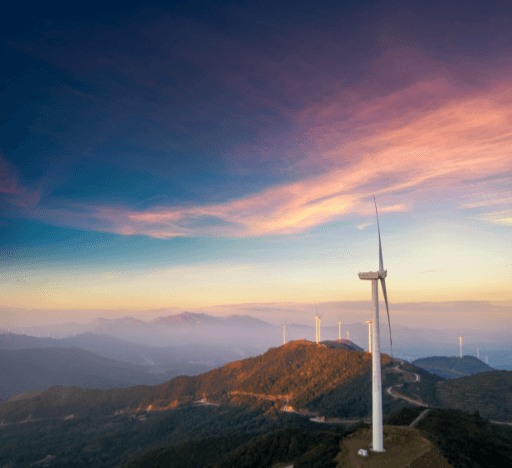On the 11 November 2020 Australia’s Bureau of Meteorology and the CSIRO released their 6th biennial State of the climate report.
The report does not paint a good picture for Australia’s climate and its impact on the country. Fortunately, we all have a part to play and every step we take towards sustainability will be a step towards the solution.
Key points
Australia
- Global temperatures vary from year-to-year. Increasing surface temperatures mean a La Niña year now is warmer than an El Niño year in the 1980s.
- Australia’s climate has warmed on average by 1.44 ± 0.24 °C since national records began in 1910, leading to an increase in the frequency of extreme heat events.
- There has been a decline of around 16 per cent in April to October rainfall in the southwest of Australia since 1970. Across the same region May–July rainfall has seen the largest decrease, by around 20 per cent since 1970.
- In the southeast of Australia there has been a decline of around 12 per cent in April to October rainfall since the late 1990s.
- There has been a decrease in streamflow at the majority of streamflow gauges across southern Australia since 1975.
- Rainfall and streamflow have increased across parts of northern Australia since the 1970s.
- There has been an increase in extreme fire weather, and in the length of the fire season, across large parts of the country since the 1950s, especially in southern Australia. There has been a decrease in the number of tropical cyclones observed in the Australian region since 1982.
- Oceans around Australia are acidifying and have warmed by around 1 °C since 1910, contributing to longer and more frequent marine heatwaves.
- Sea levels are rising around Australia, including more frequent extremes, that are increasing the risk of inundation and damage to coastal infrastructure and communities.
Global
- Concentrations of all the major long-lived greenhouse gases in the atmosphere continue to increase, with global annual mean carbon dioxide (CO2) concentrations reaching 410 ppm in 2019 and the CO2 equivalent (CO2-e) of all greenhouse gases reaching 508 ppm. These are the highest levels seen on Earth in at least two million years.
- Despite a decline in global fossil fuel emissions of CO2 in 2020 associated with the COVID-19 pandemic, this will have negligible impact in terms of climate change. Atmospheric CO2 continues to rise, and fossil fuel emissions will remain the principal driver of this growth.
- Globally averaged air temperature at the Earth’s surface has warmed by over 1 °C since reliable records began in 1850. Each decade since 1980 has been warmer than the last, with 2010–19 being around 0.2 °C warmer than 2000–09.
- The world’s oceans, especially in the southern hemisphere, are taking up around 90 per cent of the extra energy resulting from enhanced greenhouse gas concentrations.
- More than half of all CO2 emissions from human activities are being absorbed by land and ocean sinks, thus slowing the rate of increase in atmospheric CO2.
- Global mean sea levels have risen by around 25 cm since 1880 and continue to rise at an accelerating rate.
- Global CO2-equivalent reached 508 ppm in 2019. Global mean CO2 reached 410 ppm in 2019. Line chart of both CO2 equivalent and CO2 which shows two upwards curves.
- Global mean CO2 concentration and global mean of all greenhouse gas concentrations expressed as CO2 equivalent.
- Global temperatures vary from year-to-year. Increasing surface temperatures mean a La Niña year now is warmer than an El Niño year in the 1980s.
- Global surface temperature anomalies of the Earth (land and ocean) for 1950 to 2019. Anomalies are with respect to the 1961–1990 standard averaging period. Major tropical volcanic eruptions are associated with cooler global temperatures. Strong El Niño–Southern Oscillation (ENSO) years see a response in annual global temperatures, such that the year following the start year of an ENSO event is typically warmer than usual with an El Niño, and cooler with a La Niña. This is seen in 2016—the warmest year in this dataset—which followed the start year of the 2015–16 El Niño. Neutral years are those with no moderate or strong El Niño or La Niña events. Data from World Meteorological Organization. ©World Meteorological Organization.
Future
In the coming decades Australia will experience ongoing changes to its climate. Australia is projected to see:
- Continued increases in air temperatures, more heat extremes and fewer cold extremes.
- Continued decrease in cool season rainfall across many regions of southern and eastern Australia, likely leading to more time in drought, yet more intense, short duration heavy rainfall events.
- A consequential increase in the number of dangerous fire weather days and a longer fire season for southern and eastern Australia.
- Further sea level rise and continued warming and acidification of the oceans around Australia.
- Increased and longer-lasting marine heatwaves that will affect marine environments, such as kelp forests, and raise the likelihood of more frequent and severe bleaching events in coral reefs around Australia, including the Great Barrier and Ningaloo reefs.
- Fewer tropical cyclones, but a greater proportion projected to be of high intensity, with large variations from year to year.
Source : CSIRO




